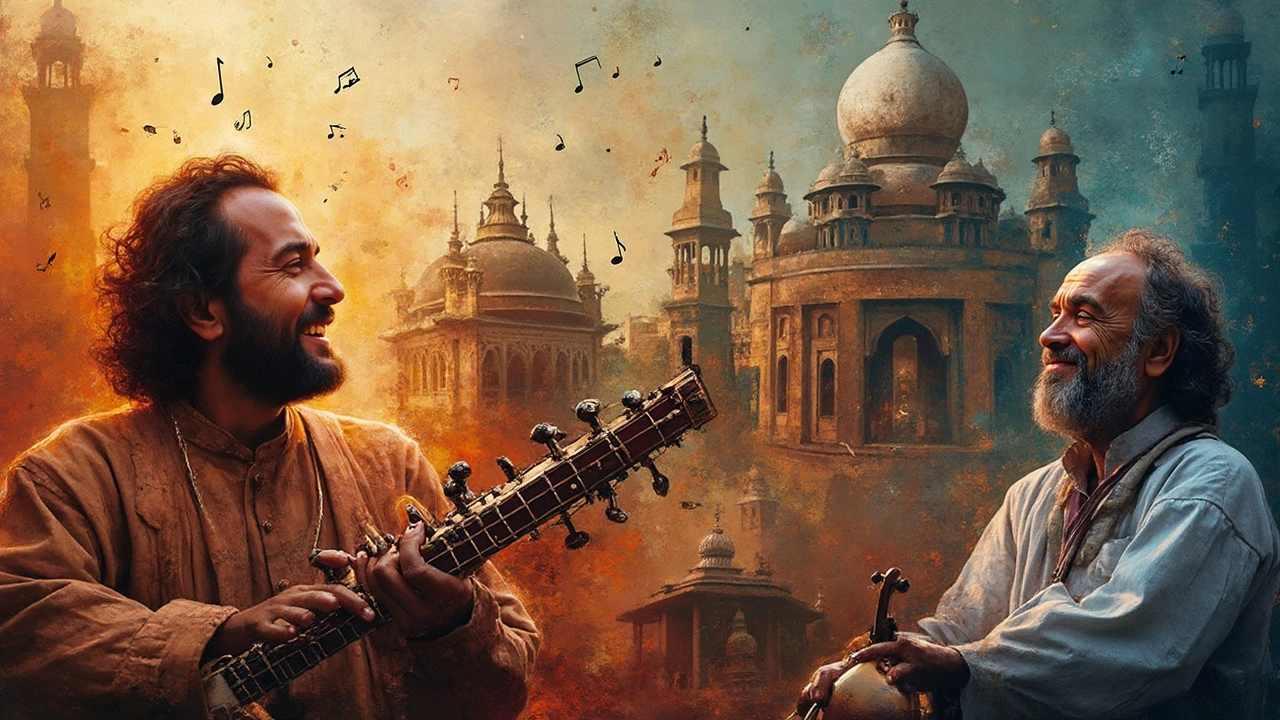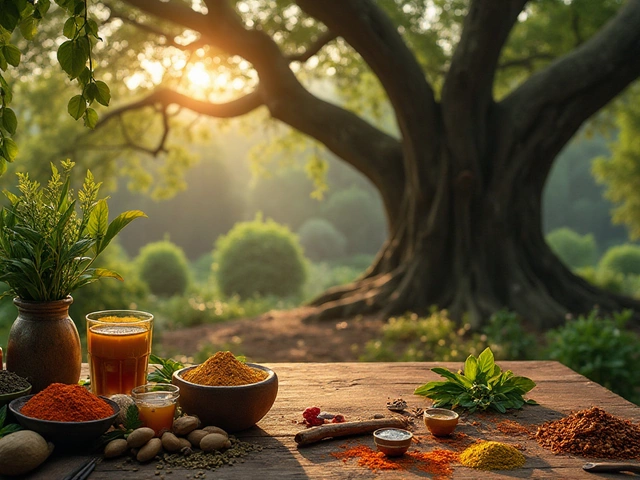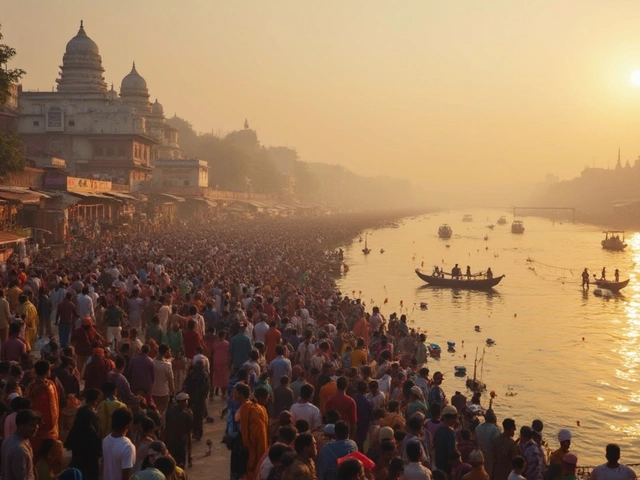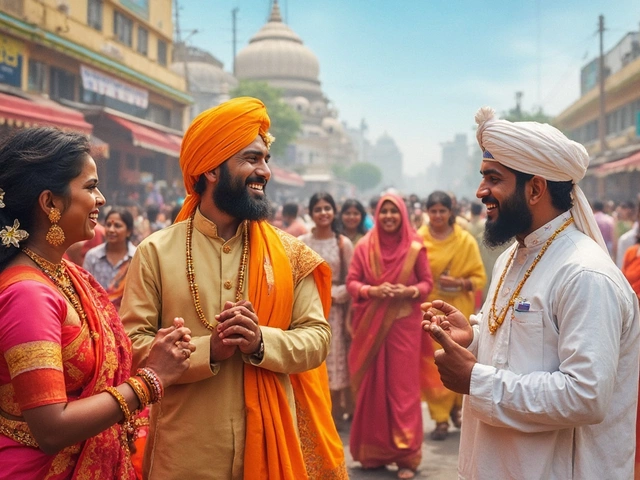Hindustani music sounds pretty exclusive if you just look at the name, but that idea falls apart the moment you walk into a concert. From big names like Zakir Hussain to old legends like Ustad Bismillah Khan, this music has always been a mix of all sorts of people and backgrounds.
If you think Hindustani music is only for people following the Hindu faith, you're missing half the story—and missing some of the best artists. Muslims have given us mesmerizing sitar, sarod, and vocal performances. Sikhs, Christians, and people with no religion at all have made their mark, too. Boundaries blur fast when everyone’s chasing the same ragas and rhythms.
Many learners are scared to walk into a Hindustani music class thinking they need to be insiders—by birth, language, region, or religion. The truth: teachers look for curiosity and dedication, not religious identity. In a typical Mumbai music school, you might bump elbows with people from a dozen backgrounds. Focus on the music, and you’ll be welcomed.
- Rethinking the Name: Why 'Hindustani' Doesn’t Mean 'Hindu-Only'
- Muslims, Sikhs, and Christians in the World of Hindustani Music
- Legendary Non-Hindu Maestros and Their Lasting Impact
- How Partition and Politics Shaped the Musical Landscape
- Popular Misunderstandings and Where They Come From
- How Anyone Can Learn, Appreciate, or Play Hindustani Music
Rethinking the Name: Why 'Hindustani' Doesn’t Mean 'Hindu-Only'
It’s easy to get mixed up by the word "Hindustani" and assume this music is just for Hindus, but that’s not how it works. The term "Hindustani" comes from "Hindustan," a historical name for the northern Indian region, not a religious label. It points to geography, not faith.
If you look at the origins of Hindustani music, you’ll see influences from Hindu, Muslim, Persian, and even Central Asian cultures. This tradition started evolving seriously around the 13th century, when musicians from different backgrounds started blending local styles with Persian instruments and musical ideas brought in by the Mughals. So right from the start, the music was a fusion project, crossing religious and cultural lines.
For example, the famous gharanas (musical lineages) often began with teachers and students from both Hindu and Muslim backgrounds. The gharana system isn’t picky about religion—it cares about musical knowledge and keeping style alive. Even the words of classic khayal compositions shift between Hindi, Urdu, Braj, or Persian as easily as flipping a switch.
So why does the “Hindu-only” myth stick? Maybe it’s the similarity in the names, or maybe it’s just that people like clear boxes for complicated things. But the musical reality never matched up with those neat labels. Anyone who looks at the history, or just listens to a good concert lineup, can see there’s way more going on than what the name alone suggests.
Muslims, Sikhs, and Christians in the World of Hindustani Music
It's easy to assume Hindustani music is a Hindu-only scene, but real history says otherwise. Just look at the list of top musicians, and you’ll see all sorts of backgrounds. In fact, some of the most famous names are Muslim: Ustad Bismillah Khan made the shehnai a household word, and Ustad Zakir Hussain’s tabla playing is loved worldwide. Gharanas (musical schools) like the Patiala, Rampur-Sahaswan, and Kirana have strong roots with Muslim families, showing how traditions pass across generations, not just within a religion.
Sikhs have contributed in their own way, especially in regions like Punjab. Bhai Samund Singh, for example, blended kirtan with Hindustani classical elements. The Sikh religious music tradition uses the same raags as Hindustani styles, and there’s a ton of crossover in both instruments and styles.
You might be surprised to hear about Christian musicians too. While they don’t always get the spotlight, there are educators and church musicians who’ve learned and taught Hindustani ragas. Some schools in Kolkata encourage students of all faiths to learn Indian classical music, so it’s not rare to find Christian kids learning sitar or vocals right alongside their Hindu and Muslim friends.
If you’re worried your religion (or lack of it) is a problem, relax. Most teachers and audiences care about the music, not the label. As long as you show respect for the art, doors stay open. Hindustani music in today’s world is more about shared passion than dividing lines.
Legendary Non-Hindu Maestros and Their Lasting Impact
Talking about Hindustani music without including non-Hindu artists is like talking about cricket and skipping Sachin Tendulkar. The most famous maestros who helped shape this art often weren’t Hindu, and their music broke plenty of boundaries.
Take Ustad Bismillah Khan—his name is almost a synonym for the shehnai. He played at India’s first Independence Day ceremony in 1947, right after the national flag was raised. For decades, his music welcomed millions to the idea of what “Indian classical” could mean outside temples and theaters. He even got the Bharat Ratna, India’s highest civilian honor.
Another giant is Ustad Zakir Hussain, a tabla wizard whose fingers have made listeners (and other musicians) stop in awe. Zakir Hussain has played everywhere: from Indian festivals to jazz clubs in New York, always making Hindustani rhythms cool for fresh ears. Since the 1970s, he’s been one of the biggest ambassadors of this music worldwide.
Let’s not forget about Ustad Amir Khan, who founded the Indore gharana. He gave khayal singing a new twist, but his reputation isn’t just in technique. He opened doors for students across castes and backgrounds and was known for working with Hindu, Muslim, and Christian students in his home in Bombay.
Here’s a quick comparison of their achievements so you can see just how much non-Hindu artists have changed the game:
| Artist | Main Instrument/Style | Year Active | Major Awards | Global Reach |
|---|---|---|---|---|
| Ustad Bismillah Khan | Shehnai | 1930s–2006 | Bharat Ratna, Padma Vibhushan | Played globally, performed at Red Fort Independence Day |
| Ustad Zakir Hussain | Tabla | 1960s–present | Padma Bhushan, Grammy Awards | Major tours in US, UK, Europe, Asia |
| Ustad Amir Khan | Khayal (vocalist) | 1930s–1973 | Sangeet Natak Akademi Award | Left a mark on generations of global vocalists |
Plenty more names could make this list—Amjad Ali Khan (sarod), Vilayat Khan (sitar), and Bade Ghulam Ali Khan (vocal), just to name a few. These maestros proved again and again: Hindustani music belongs to anyone hungry enough to chase perfection. If you’re starting out, learning from their recordings is one of the fastest ways to get a real feel for what mastery sounds like—no religion required.

How Partition and Politics Shaped the Musical Landscape
The story of Hindustani music changed overnight in 1947 when India and Pakistan split during Partition. Before that, musicians—no matter which religion or background they belonged to—traveled and performed across the whole region freely. Cities like Lahore, Delhi, and Lucknow saw Hindu and Muslim musicians learning from each other, sharing concerts, and often living under the same roof.
After Partition, this musical traffic hit a wall. Many big-name ustads, like Ustad Bade Ghulam Ali Khan, had to choose sides—moving from Pakistan to India, or the other way around. Some musicians lost their homes and students overnight, and family traditions that had lasted centuries got scattered across borders. The famous Patiala gharana, for example, ended up split between both countries, with students on each side struggling to keep the style alive.
Politics didn’t just stop with Partition. In the decades since, government funding, radio programs, and even visa rules have affected which musicians get heard and who can travel. All India Radio, for example, helped many artists in India during the 1950s and 60s, but strict rules sometimes limited who could broadcast. Similarly, cross-border music collaborations often hit red tape, even when audiences on both sides were eager to listen.
It’s not all doom and gloom. Musicians have found ways to stay connected. Some families still send recordings or teach via calls and video chats. Online concerts let artists in Lahore and Delhi perform “together” from hundreds of miles apart. Now, students from anywhere in the world can learn from gurus regardless of which country they’re in, thanks to technology cutting through borders.
The gist: while politics and history have definitely shaped the scene, they haven’t stopped the mix. Hindustani music still isn’t about who you are or where you’re from; it’s about keeping the beats and melodies alive no matter what border lines politicians draw.
Popular Misunderstandings and Where They Come From
People trip up a lot when it comes to Hindustani music. One huge misunderstanding is that only Hindus can play or master this music because the word "Hindustani" gets mixed up with "Hindu." It actually means "from Hindustan,'' which is just an old way of saying North India. Religion has never been the main gatekeeper here.
Another common myth shows up in textbooks and movies. Sometimes you’ll only see images of Hindu gods or hear Sanskrit prayers tied to Indian classical music. So kids, especially outside India, may walk away thinking it's strictly a religious or Hindu thing. But if you check out event lineups or music awards, Muslim, Sikh, and Christian artists are always in the picture.
Some of the confusion comes from family stories or regional pride. A grandparent might say, “Our people invented this raga,” or “Our community made this famous,” which just isn’t true across the board. Music in India has always been mixed up with different traditions, especially when you look at who played in royal courts or on the radio.
- Names with "Pandit" (Hindu honorific) or "Ustad" (Muslim honorific) sometimes fool people into thinking only those groups can claim the art. In reality, many musicians swap these titles as a nod of respect, not as a strict religious line.
- Partition and tense politics in the 1940s and later made many communities overemphasize their own musical legends, making the heritage sound less shared than it really is.
- Some non-Indian listeners figure the music is off-limits if they don't speak Hindi or aren’t familiar with Indian culture. But that's like thinking jazz is only for Americans.
If you want numbers, just peek at the history books and music archives:
| Iconic Artist | Religion/Background | Instrument/Style |
|---|---|---|
| Ustad Zakir Hussain | Muslim | Tabla |
| Pandit Ravi Shankar | Hindu | Sitar |
| Begum Parveen Sultana | Muslim | Classical Vocal |
| Dr. L. Subramaniam | Hindu | Violin |
| Prof. Balwant Singh | Sikh | Vocal |
It's clear: No single faith owns Hindustani music. The main thing that matters is love for the sound and putting in the hours to learn it.
How Anyone Can Learn, Appreciate, or Play Hindustani Music
You don’t need to be born into a musical family or follow a particular religion to play or even love Hindustani music. What you really need is curiosity and a bit of patience. Tons of people from all backgrounds walk into classes or start learning online every year. In fact, the music scene in cities like Delhi and Mumbai looks more like a mixed bag than an exclusive club.
If you want to start, here’s what helps:
- Find a teacher or an online course. Many respected teachers run both in-person lessons and digital sessions that are open to anyone.
- Pick an instrument or vocal style. Don’t overthink it. Tabla, sitar, harmonium, or just your voice—start with what you like listening to.
- Get used to listening. Unlike Western pop, Hindustani music is all about the mood (raga) and the time of day. Try listening to morning ragas in the morning or evening ones at night—it just makes more sense that way.
- Practice regularly, even if it’s just 20 minutes a day. The trick is consistency, not marathon sessions.
- Go to live gigs or watch performances on YouTube. Seeing how artists improvise is a massive part of the learning process.
Don’t worry about language barriers. Lyrics are sometimes in Sanskrit, Hindi, Urdu, even Braj—but plenty of people just hum along to the tune. Understanding the meaning can come later.
A quick look at music school stats drives home the point. Here’s a sample from a well-known Mumbai academy:
| Background | Percentage (%) of Students |
|---|---|
| Hindu | 52 |
| Muslim | 34 |
| Sikh | 9 |
| Christian/Other | 5 |
There are even foreign students in many classes—Japanese, Americans, Europeans, and beyond—proving this isn’t a closed circle. If you’re on the fence, just remember: everyone starts as a beginner. If you play, appreciate, or even just listen with genuine interest, you’re already part of the scene.





